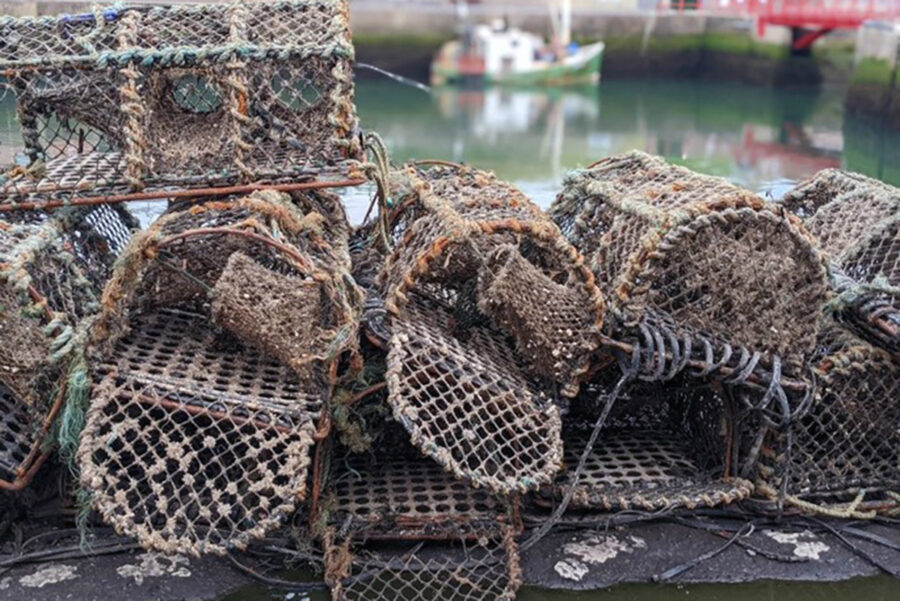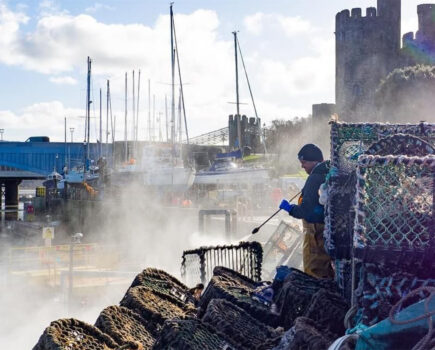Industry invited to shape consultations on second batch of five FMPs
With industry representatives already talking about ‘consultation fatigue’ after completing comment on the first six Fisheries Management Plans (FMPs) for England and Wales, which closed on 1 October, the MMO last week confirmed the next set of consultations.
Announced less than 48 hours after the closure of the first round, this second batch of FMPs also applies only to England. As with the roll-out of iVMS, Scotland and Northern Ireland appear happy to look and learn in the short term, whilst stating that they remain committed to delivery of their own FMPs within the timetables agreed between the four UK administrations and announced in the Joint Fisheries Statement.
Scottish involvement in developing the FMP for sprats extends only to the North Sea, and does not include the West of Scotland sprat fishery that once provided an alternative fishery for a handful of boats, which traditionally fished for them during nights of cold hard frosts and clear skies during the winter.
The latest MMO announcement is a ‘pre-notification’ for those in the industry who wish to help to shape the consultations, which will be developed and published towards the end of 2023.
As with the first six FMPs, the new round of plans will be developed through a range of different partners, Defra, the MMO, the IFCAs and Cefas.
It’s perhaps not surprising that Defra has asked the Association of IFCAs to lead in the preparation of the FMP for cockles in English waters. That statement will go down like a lead balloon with many fishermen, who were hopeful that the FMPs were a route to removing what they see as the worst aspects of inshore management – but in reality, all cockle beds in English waters are already managed by IFCAs, some with many decades of undertaking this task, for better or worse.
To give your views or register your interest in future engagement events for the cockle FMP, email: CockleFMP@ association-ifca.org.uk
The FMP for queen scallops in English waters could throw up considerable challenges, with shared Irish Sea stocks already managed by the Welsh government and the Isle of Man Scallop Management Board, and interest from both Northern Irish and Scottish vessels.
Development of that FMP will be led by Defra’s Non-Quota Species Fisheries Policy Team, who can be contacted by anyone wishing to become involved in its development at: shellfish@defra. gov.uk
The North Sea and Channel Sprat FMP will be a joint plan between Defra and the Scottish government. It will cover UK waters of the North Sea and Channel. The draft FMP is being prepared by Cefas.
Despite additional quota arriving as part of the TCA last year, inshore vessels in the southern North Sea that made efforts to return to their traditional sprat fisheries off the Thames and the Wash found very few fish – certainly not enough to make a living.
The Cefas team can be contacted at: fmp@cefas.gov.uk
Hard on the heels of the Channel Non-Quota Species FMP – most notable for its suggestion for a raised MLS for cuttlefish of 23cm – is a similar odd grouping of non-quota species in the English waters within ICES divisions IVb and IVc, covering a range of different fishing methods, fleets and markets.
This FMP will cover a similar range of species to its Channel counterpart: cuttlefish, grey, red and tub gurnards, John Dory, spotted dogs, squid, octopus, cuttlefish and red mullet.
This one is being drafted by the MMO, who can be contacted at: fmp@marinemanagement. org.uk
The same goes for the final FMP, for skates and rays, also in the English part of the North Sea, but extending down into areas VIId and VIIe. Seven species are named, but in case you track down any more unusual species, an eighth category simply called ‘skates and rays’ has been included.
No dates are given for the release of these FMPs, other than confirmation that they’ll be in the public domain before the end of 2023. With the six fast-track FMPs only just having closed to public consultation, that doesn’t give long for these to be developed.
So: 11 FMPs down, as it were, and 32 to go! If the timetable in the Joint Fisheries Statement is adhered to, 2024 is going to be ‘the year of the FMP’ – 25 are timetabled to be developed and published next year, which would mean one a fortnight.
Commenting on the ambition of the process, Mike Cohen, chief executive of the NFFO, said: “The idea behind the Fisheries Management Plan initiative is certainly a good start. Many of us in the industry have been making the case for co-management for years.
“If FMPs really deliver evidence-based, collaborative decision-making, aimed at maximising resource use in a way that respects economic and social as well as environmental sustainability, then it will be a real achievement.
“Engaging with the FMP process requires a huge amount of work, however, and the pace is relentless. The number, complexity and frequency of meetings and consultations presents a significant challenge. So too does unravelling all of the ways in which FMPs overlap with one another and with other key policy proposals, such as those on discards and remote monitoring.
“Many of the proposals in the first crop of FMPs are more about broad-scale scene-setting, rather than detailed management action. This is not a bad thing in itself – FMPs are meant to be iterative and responsive – but it does mean that the workload is going to continue growing for a long time to come, as older FMPs are reviewed and revised.
“We must hope that unrealistic timescales and workloads do not sink a promising approach before it has really had a chance to get going.”
This story was taken from the latest issue of Fishing News. For more up-to-date and in-depth reports on the UK and Irish commercial fishing sector, subscribe to Fishing News here or buy the latest single issue for just £3.30 here.
Sign up to Fishing News’ FREE e-newsletter here.








